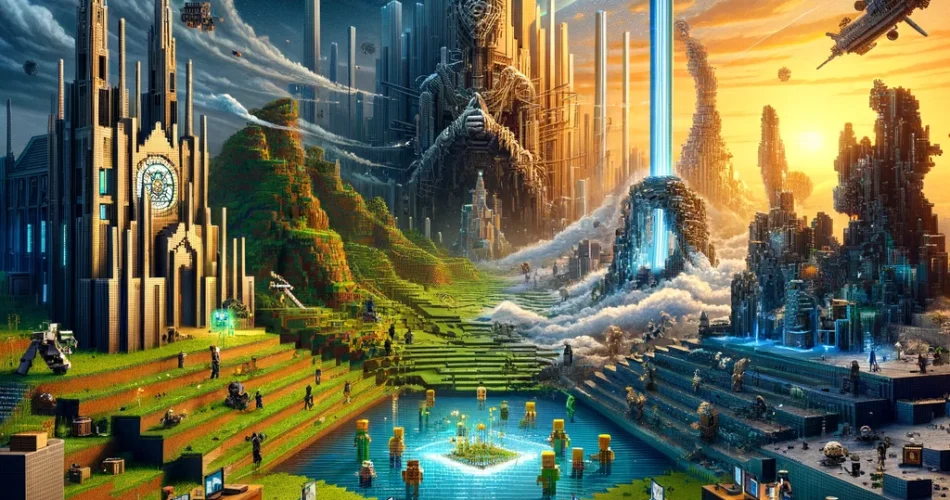“Minecraft” – a name that resonates with millions around the world. You’ve likely heard of it, and if you haven’t, you’ve probably encountered its massive cultural impact. Often, games are dismissed as mere distractions, ways to while away hours. I challenge that notion, particularly through the lens of Minecraft, a game that has significantly shaped my life and those of my peers.
For many, including myself, gaming has been transformative. Minecraft, a seemingly simple game of blocks and survival, played a pivotal role in my journey into adulthood. Now in my twenties, I credit Minecraft for instilling in me a spirit of entrepreneurship and creativity. It was more than a game; it was a sandbox of infinite possibilities that taught me the value of innovation and persistence.
I recall joining my first online Minecraft faction server at the tender age of 10. Despite its pay-to-win mechanics—a common critique of many games at that time—it was an avenue for unparalleled social connection and creativity. This server wasn’t just a game; it was a community. It was here that I forged lasting friendships and even funded my first computer through in-game earnings.
But what sets Minecraft apart? It certainly isn’t the graphics or the straightforward goal of defeating the Ender Dragon. Instead, it’s the game’s boundless capacity for creativity. Minecraft’s procedural generation and virtually unlimited map size offer a unique experience for every player, every time. It’s a world where your imagination can run wild, crafting anything from simple homes to complex computational devices, thanks to redstone—a feature that revolutionized game mechanics by allowing players to create working electronics within the game.
The introduction of redstone mechanics demonstrated Minecraft’s potential to be more than just a game; it was a tool for learning and innovation. Players have constructed intricate devices, including fully functional computers and interactive games, all within the confines of this blocky universe. This aspect alone showcases the game’s educational value, teaching principles of engineering, problem-solving, and coding through interactive play.
Minecraft’s influence extends beyond the individual, fostering a vibrant community of modders, creators, and educators. It has become a platform for collaborative projects, educational tools, and even social experiments. This game has not only changed my life by teaching me the value of creativity and perseverance but has also impacted countless others by providing a canvas for expression, learning, and connection.
In reflecting on my journey with Minecraft, I realize it was never just about consuming time. It was about creating, learning, and connecting in ways that traditional education or social structures seldom allow. Minecraft taught me the power of creativity and the importance of community, lessons that have been invaluable in my personal and professional development.
In Conclusion
Minecraft is more than a game; it’s a phenomenon that has taught us the power of imagination and the importance of digital communities. As we look to the future, let us not dismiss games as mere distractions but recognize their potential to inspire, educate, and transform. Stay tuned for more reflections on the world of gaming and its impact on our lives.
Original post: https://www.cagilberk.com/games-exist-to-steal-our-time/
